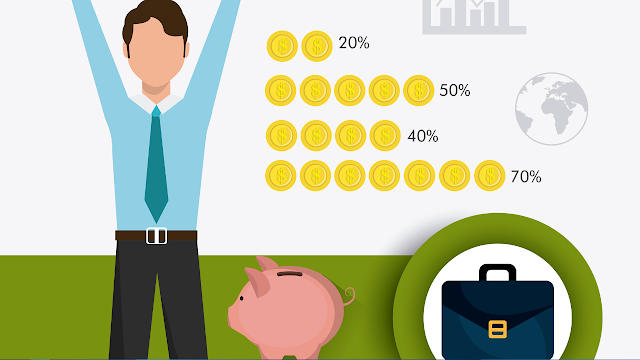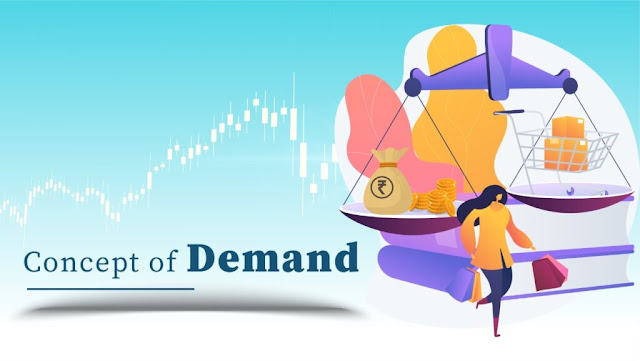Derivatives: What is good to know before investing?
Derivatives are essentially contracts whose value is derived from the underlying asset. The underlying asset can be a financial asset or a commodity. The value of the underlying asset is constantly changing according to market conditions.
Financial Derivatives:
Derivatives derived from financial assets are known as financial derivatives. Financial assets include stocks, interest rates, currencies, index, etc. For example, stocks are derivatives whose underlying asset is the stock.
Commodity Derivatives:
Commodity derivatives are derived from a physical commodity. A physical commodity means commodities like oil, milk, etc. For example, if the price of milk increases, the price of ice cream and butter will increase. In this case, milk is the underlying asset and a change in the price of the asset changes the price of things derived from it. Similarly, if the price of crude oil increases, so will the price of petrol and diesel. Crude oil is the underlying asset and gasoline and diesel are things that are derived from it.
Definition of derivative
Derivatives are contracts that are contractual in nature based on an asset. The underlying asset can be a financial asset or an asset. The value of the underlying asset varies according to market conditions.
Financial Derivatives:
Derivatives of financial assets are known as financial derivatives. Financial assets include equity, interest rates, currency types, index, etc. For example, equity comes from another part of its shares.
External:
Surplus is based on tangible assets. Tangible goods are things like oil, milk, etc. For example, if the price of milk increases, the price of ice cream and butter will increase. In this case, milk is a basic commodity and a change in the price of the commodity changes the price of the commodity. Likewise, if the price
of oil increases the price of petrol and diesel will also increase. Crude oil is the basic commodity and gasoline and diesel are its derivatives.
Main types of derivatives:
Forwards: A forward contract is a non-standardized agreement between parties to buy or sell an asset at a specific date in the future at a specific price. The trade takes place directly between the parties and the stock exchange does not participate. They are used to hedge risk in interest rates, commodities, stocks, etc.
"A" is a wheat grower, whatever wheat he gets, he sells it in the market. In recent years, there have been large fluctuations in the price of wheat on the market due to premature rainfall. Wheat traders are also sick of it. To save himself from loss, "A" contracts with a merchant to sell him 100 kilograms of wheat for 2000 rupees after 3 months. Irrespective of the fluctuation in price, 'A' will sell wheat at 2000 rupees. This is an example of a forward contract. The underlying asset in this contract is wheat.
Futures: A futures contract is a standardized agreement between parties to buy or sell an asset at a specific date in the future at a specific price. They are traded on the stock exchange. These derivatives are used to hedge risk or to speculate on the price movement of the underlying asset.
Option: It is equivalent to a futures contract. It is also concluded through the stock exchange. With this type of derivative, there is an option whether a party wants to sell or buy. The party has no liability, the party can even keep the assets if they want. All transactions are settled in cash. It gives the buyer a right, but not an obligation. To buy options, you have to pay a premium.
If the price of wheat increases from 2000 rupees after 3 months, then 'A' has to suffer a loss. So “A” decides to insure the contract to minimize his loss. He pays Rs 200 as premium to insure the contract. The insurance company will pay 'A' only if the price of wheat is more than Rs.2000. If the price of wheat becomes 7000
rupees per 100 kilograms, the insurance company will pay 5000 rupees to 'A'. If the price of wheat falls to 1500 rupees, then 'A' will not have to pay anything to the insurance company. In this way “A” transferred its risk to the insurance company. This is how an option contract works in the derivatives market.
Call Option: The buyer has the right, not the obligation, i.e. he cannot be forced to buy the given asset at the given price. When you buy a call, you expect the price to go up.
Put option: It is up to the buyer to sell the asset or not. When you buy a put option, you are speculating that the price of the asset will fall below the strike price of the instrument before it expires.
American Options: These are contracts that can be exercised at any time before the expiration date. For example, individual securities are available on NSE.
European options: Exercisable only on the expiration date. For example, all index options that are traded are European options.
• Swaps: This is the exchange of one security for another. there are
1. Interest rate swaps
2. Commodity swaps
3. Currency swaps
4. Credit Default Swap
Interest rate swap: This is an agreement between two parties on the terms of a trade credit. If a person takes out a home loan, he has two options for interest rates on home loans, one is flexible, i.e. changes according to the market, and the other is fixed.
Example: “A” takes a loan from the State Bank of India at a fixed rate of interest and “B” takes a loan from HDFC Bank at a variable rate of interest. If in the future "A" thinks that to pay less interest he should switch to a variable interest rate and "B" thinks that due to market uncertainty he should pay a fixed interest rate. So what happens, in this case, is that they exchange interest rates. “A” will pay the interest rate of “B” and vice versa. Provided that the loan should be of the same category and approximately the same amount. This is an interest-rate swap contract. If one party defaults, the terms will revert.
Commodity Swaps: These swaps allow counterparties to exchange cash flows.
Currency swaps: A trader can sell shares in the UK and buy them in a foreign currency to hedge currency risk.
Credit Default Swaps: These swaps were the main reason behind the financial crisis of 2008. They were traded to insure against the default of corporate debt or mortgage-backed securities. So when the housing bubble burst and the mortgage-backed market collapsed, there simply wasn't enough capital to pay off the swap holders.
For more detail click here
source: https://www.linkedin.com/pulse/derivatives-what-good-know-before-investing-muitindia/



Comments
Post a Comment